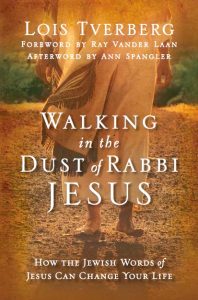by Lois Tverberg
 When Jesus talks about having a “good eye” or a “bad eye,” he was employing a Hebrew idiom about “one’s eye” as one’s outlook toward other people. A person with a “good eye” was one who was generous to others, while one with a “bad eye” was stingy, greedy and self-centered. Jesus was emphasizing that a person’s entire outlook on life can be assessed by whether he puts others or himself first.
When Jesus talks about having a “good eye” or a “bad eye,” he was employing a Hebrew idiom about “one’s eye” as one’s outlook toward other people. A person with a “good eye” was one who was generous to others, while one with a “bad eye” was stingy, greedy and self-centered. Jesus was emphasizing that a person’s entire outlook on life can be assessed by whether he puts others or himself first.
Another passage from early rabbinic writings explores this idea in a different way. A famous quote from Pirke Avot reads,
There are four types among men:
He who says, “What is mine is mine and what is yours is yours”
— this is the common type, though some say that this is the type of Sodom.
He who says, “What is mine is yours and what is yours is thine own”
— he is a saintly man.
He who says, “What is mine is yours and what is yours is mine”
— he is an ignorant man.
And he who says, “What is yours is mine, and what is mine is mine”
— he is a wicked man. (Pirke Avot 5:13) 1
Once again, people are evaluated on their attitude toward others. Some just mind their own business—“what’s mine is mine” —and believe everyone is responsible for their own survival in the world. This seems neutral, but the comment “some say this is the type of Sodom” means that this attitude can be quite heartless. In the story of Lot’s angelic visitors in Sodom, the townspeople did not protect the visitors from thugs who wanted to abuse them; they just said “Not my problem” (Genesis 19). This attitude captures the idea of the first statement.
The second statement is that the truly righteous person says “what’s mine is yours”—meaning that he or she looks for ways to bless others in whatever way possible. They maintain a constant attitude of “how can I help you?” and the problems of others burden them as much as their own. If they can’t be generous with money, they’ll donate time and energy to help. Few people are truly like this, but we can easily recall those who have poured out their lives in this way.

The last statement is that the absolute worst type of person is the one who says, “what’s yours is mine” —a person who wants to greedily benefit from others. You might think this only applies to pickpockets and snake-oil salesmen, but it can describe what we see as innocent actions too.
Sometimes what we call “frugality” can be a way to legitimize having a “bad eye” — looking at your own wallet and not considering others. We do this when we avoid tipping to save money, when we underpay people for their work, or when we go overboard to get a deal at someone else’s expense.
We should be careful to examine whether our pious efforts toward “good stewardship of God’s resources” isn’t just greed in disguise. Are we frugal or are we stingy? A good test is to examine whether we save money by denying ourselves, or by denying others. Stinginess is when we say, “what’s yours is mine and what’s mine is mine,” and our gain comes through someone else’s loss.
Both Jesus and the rabbis around him taught that the issue of generosity really goes to the heart of who we are as people. We should turn our eye on ourselves and examine which “type” we really are.
 To explore this topic more, see chapter 5, “Gaining a Good Eye” in Walking in the Dust of Rabbi Jesus, Zondervan, 2012, p 69-80.
To explore this topic more, see chapter 5, “Gaining a Good Eye” in Walking in the Dust of Rabbi Jesus, Zondervan, 2012, p 69-80.
1This is one of the “four types” rabbinic sayings that is of the same genre as Jesus’ parable of the “four soils.” This style of teaching is always a subtle call to self-examination. For another example, see “Which Type are You?”
Pirke Avot is a collection of sayings of rabbinic teachers from between 200 BC and 200 AD. Some are contemporaries with Jesus, but even earlier and later sayings are often pertinent to his Jewish context.
(Photos: DeviantArt, Peter Isotalo)

